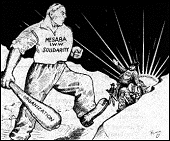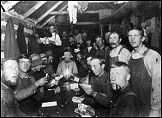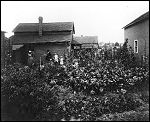Corporate managers struggled to control the miners in times of change through housing, safety programs, pension and voluntary relief benefits, stock-subscription plans, and sanitation and welfare committees. The miners, drawn into an orbit of dependence, were induced to accept employment terms without dispute. In spite of these efforts, miners felt compelled to organize as early as 1907, and eventually, go on strike. To combat widespread work stoppage, mining companies imported train-loads of new immigrants, largely from southern Europe, and broke the strike. Many of the original miners decided to try other ways to earn a living, such as farming.
The industry was battered by economic shifts during the first half of the century, and its workers were unprepared for the second half. Changes in the demand for iron ore, the development of new technologies, and importation of foreign low-priced ore, steel and manufactured products, presented serious challenges to the management, and also spelled disaster for the miners. Development of the taconite process brought a short-lived reprieve.
Foreign competition and environmental concerns limited a serious resurgence of the mining industry. The elements of change had again exacted a price that was threatening the security and welfare of the miners. [MIACOC] |
|
|
Miners

This cartoon appeared in a labor paper called Solidarity in 1916.
The figure of a worker with a club stands for the
Industrial Workers of the World (IWW).
The radical labor organization led a miners’ strike
on the Iron Range that year. [NL]

Early miners in their camp. Coleraine, 1906
Minnesota Historical Society

Gregor Kristjian’s home near Pioneer Mine, 1922.
Minnesota Historical Society
|





